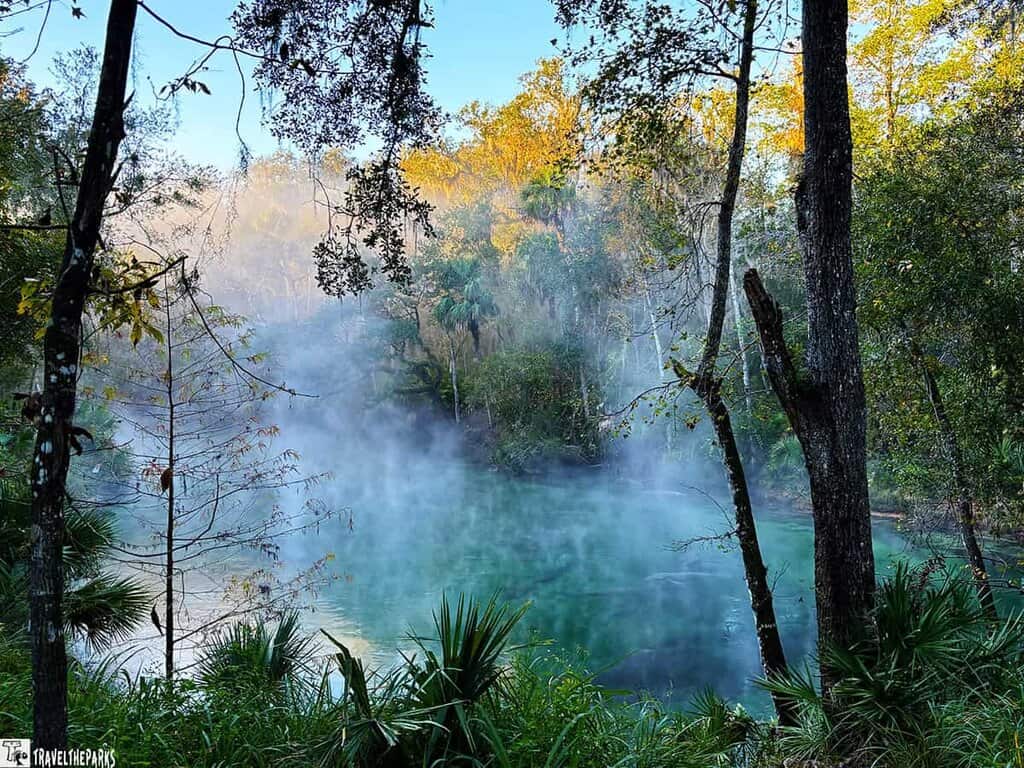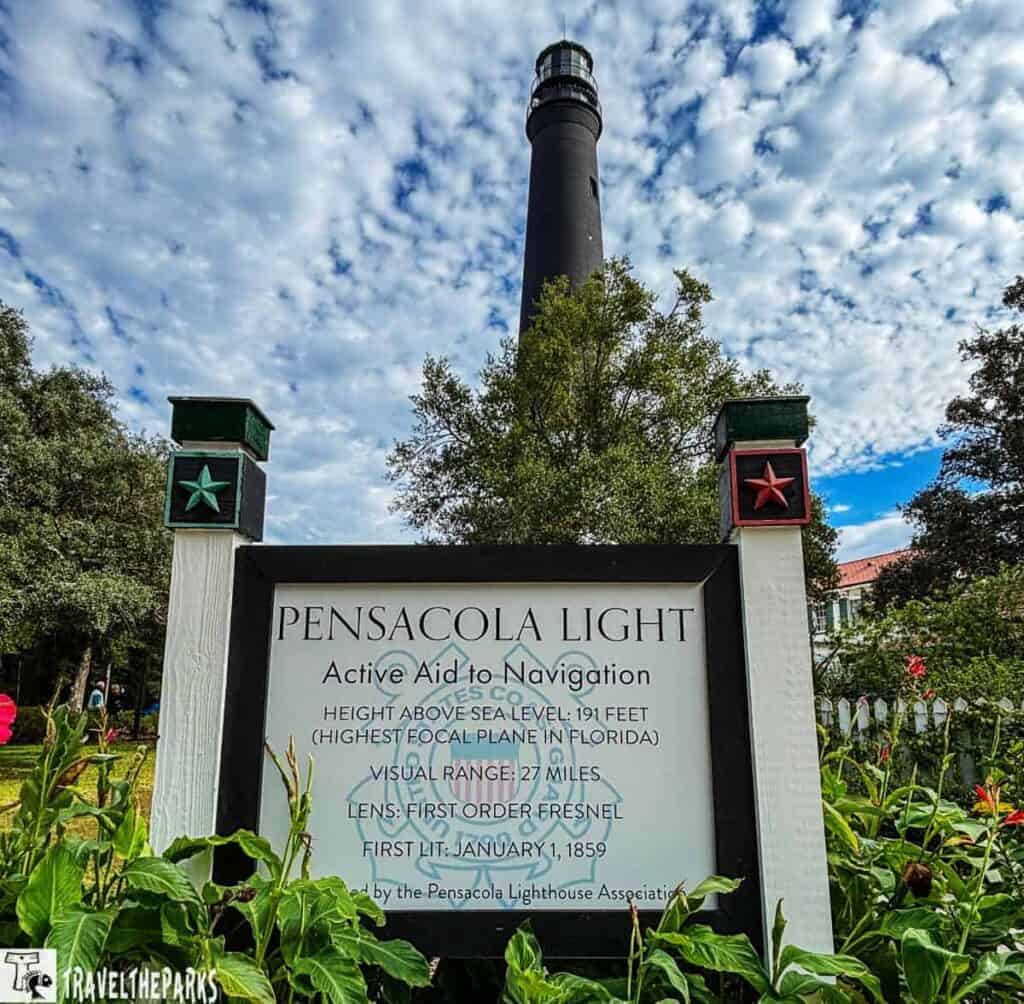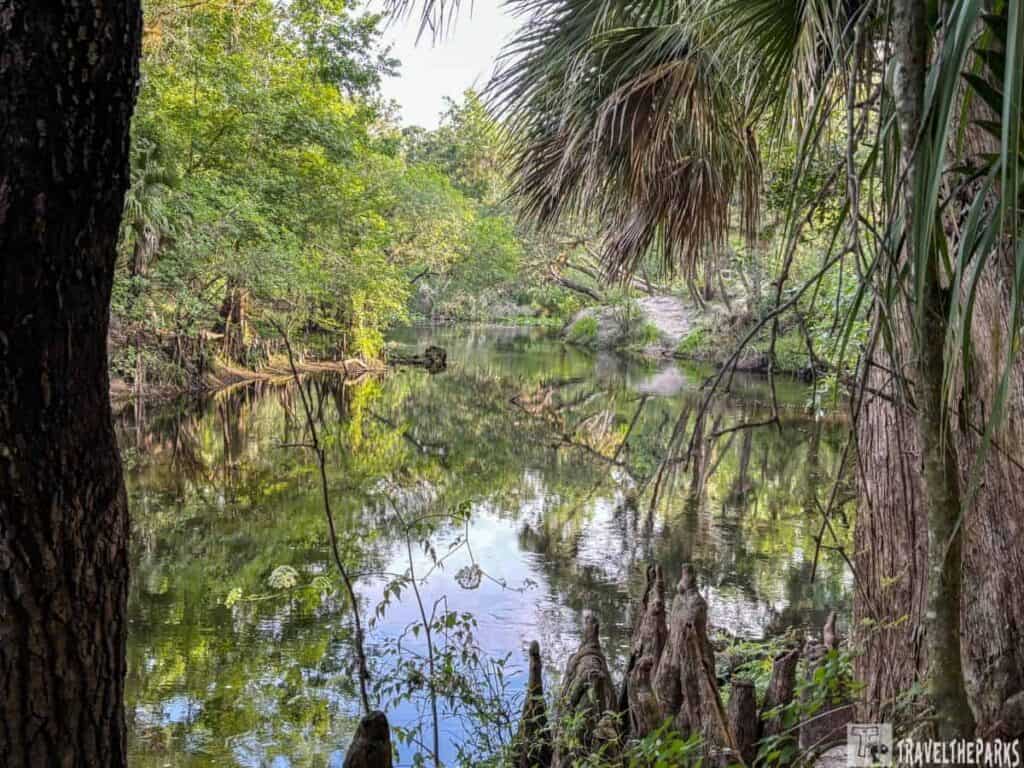Beautiful Blue Springs State Park is widely known as one of the best places to see the enchanted Florida manatee during the winter months. There is something special about the turquoise water in Florida’s springs. Underground aquifers supply these springs, which filter the water, resulting in incredible clarity. In Florida, Ichetucknee Springs, Ginnie Springs, DeLeon Springs, Wakulla Springs, and Silver Springs are some of the most popular springs. It is the unique beauty and recreational opportunities offered by each of these springs that make them special. However, Blue Springs in Central Florida is renowned for its manatees.
Central Florida experiences frequent cold fronts from November through March. As a result, these social creatures find comfort in the consistent 72-degree crystal-clear waters of Florida springs. Visitors flock to these magical springs to observe the large numbers of slow-moving sea cows as they congregate in the natural run, seeking warmth.
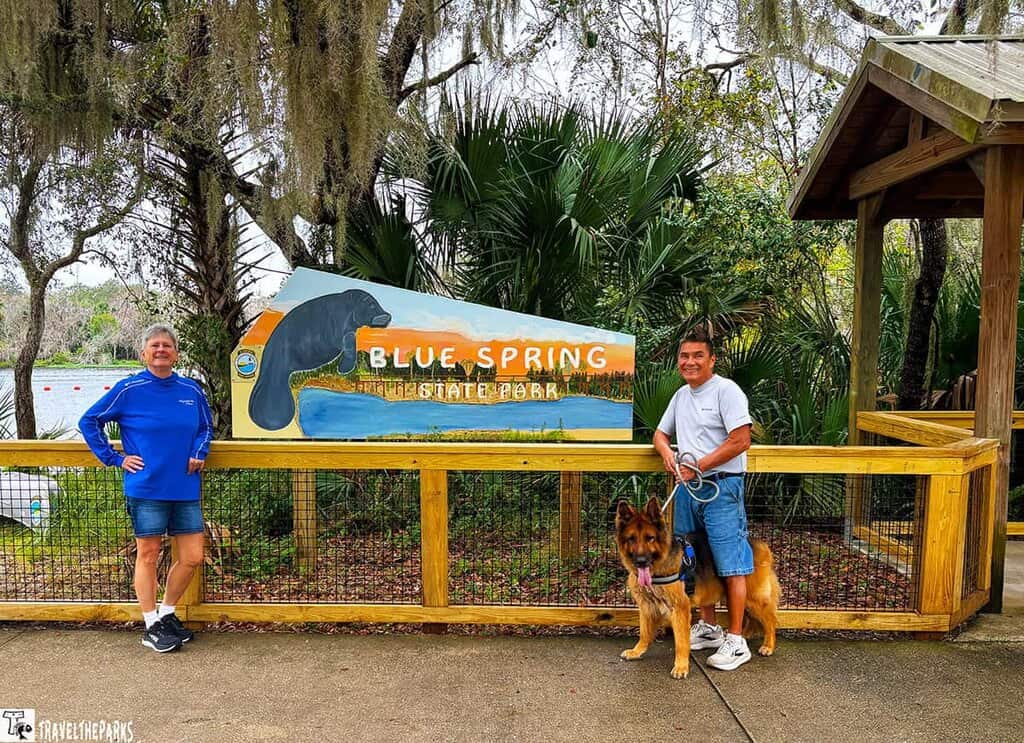
This post may contain affiliate links, meaning if you purchase something through one of these links, we may earn a small commission at no extra cost to you! Read the full disclosure policy here.
Table of Contents
Stunningly Blue Springs State Park – History
Beautiful Blue Springs has a remarkable history. The original inhabitants, the Timucuan Indians, depended on the spring for food, materials and shelter. Pioneers looking to settle the land displaced the native peoples after John Bartram explored the St. Johns River looking for resources for the British government.
First purchased by Louis Thursby, a gold prospector, in 1856. He initially found the fertile ground ideal for growing citrus. However, a chilling freeze in the early 1890s killed most of his crop. The family then discovered that the run would make a fine steamboat hub, drawing passengers from Jacksonville interested in the natural resources of the spring. He quickly became a successful business owner after building a dock for the steamers, moving cargo and tourists up and down the St. Johns River. Then the railroad came and steamboat activity ceased, leading to the demise of the venture.
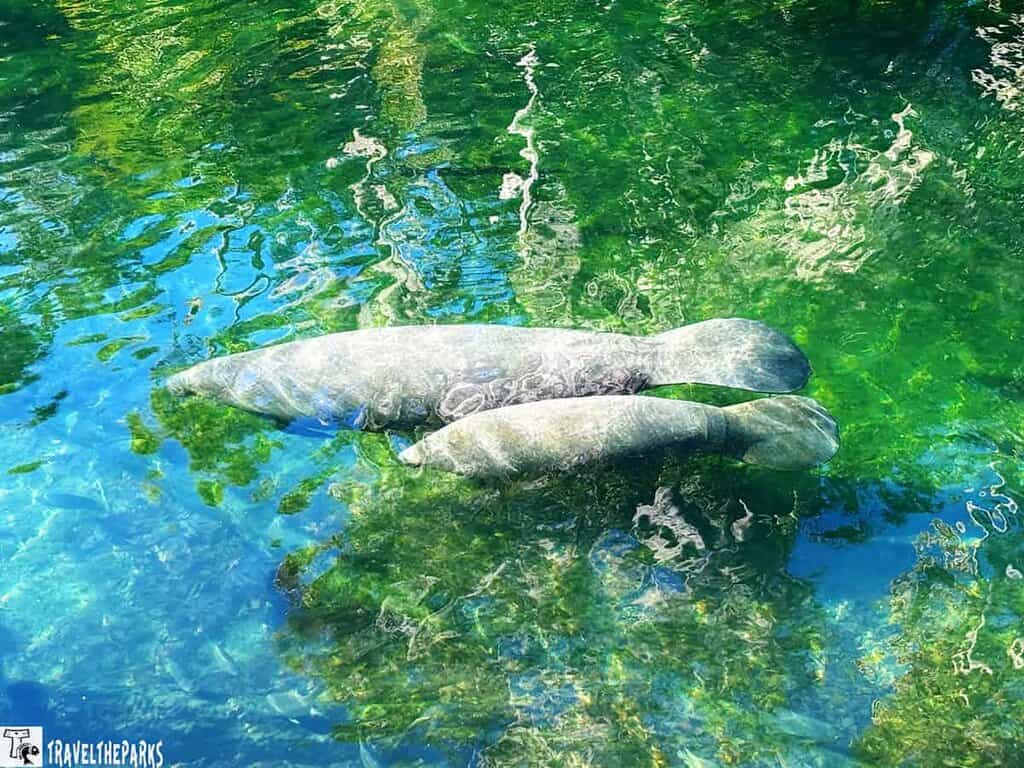
In the early 1970, the Jacques Cousteau film “The Forgotten Mermaids.” a reference to sailors who thought these human-like mammals were mythical mermaids. The documentary drew attention to the plight of the manatees. Finally, two years later in 1972, the state established Blue Springs State Park. They designated it a refuge to protect the 2600 acre park’s resources in the St. Johns Watershed. The number of endangered sea cows has increased from 14 in 1970 to nearly 400 in 2020.

Prime Manatee Season at a Central Florida Blue Spring State Park
Conveniently located 30 minutes from Orlando, outside Orange City within easy accessed of Interstate 4. These 72-degree fresh-water don’t just draw manatees, in the summer hordes of human swimmers descend on the park, looking to escape the high temperatures endured during Florida humid summers.
Every November through the end of March, they suspend all water activities in the spring run and boil. Park officials consider this prime manatee season.
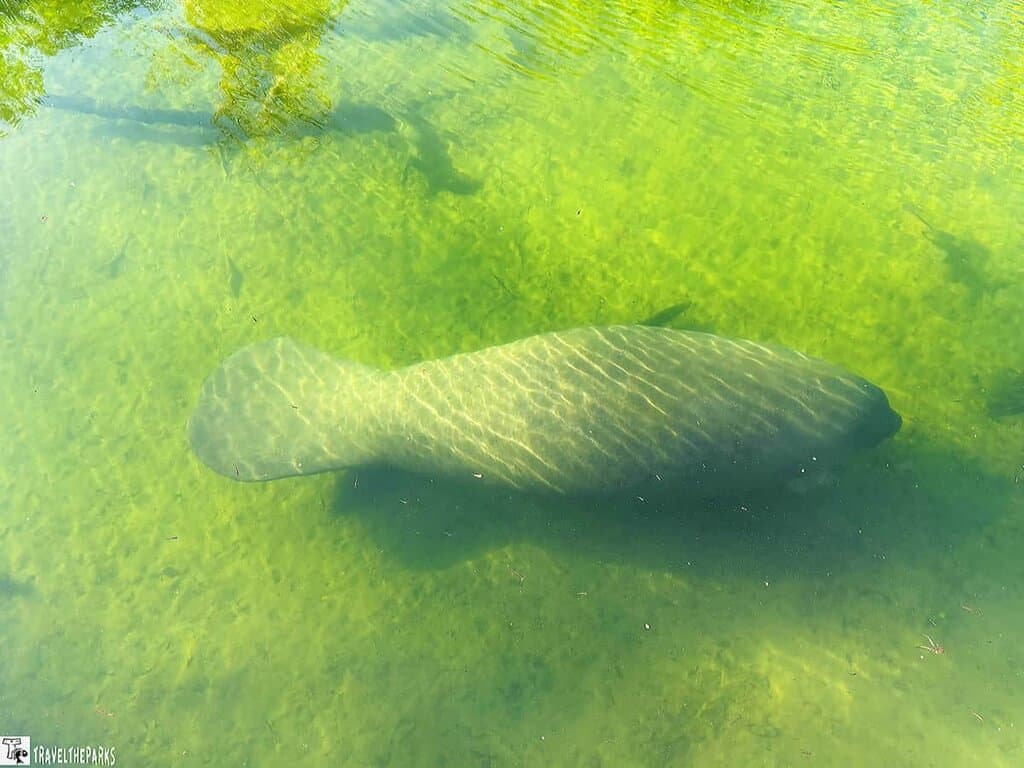
What to Know Before You Go to Blue Springs State Park
The cost was $6 per vehicle to enter the park. This is a VERY popular park, especially during the Orange City Blue Springs Manatee Festival held in mid-January. The Manatee Festival uses the funds raised through its annual festival to benefit Friends of Blue Springs State Park, D.A.R.E. Programs, and other area organizations.
I highly recommend arriving early as the park fills by noon as visitors cram to see these magical manatees. Rangers close the park for the day once the two parking lots are full. Today, on this warm December day, we were the second car in line before the gate opened. One bonus for us today is that there is no wind, making it an ideal morning for photographing the marine mammals below the water’s surface. Once there is a wind, it is difficult to get good pictures. As the day goes on, fewer manatees are present, as they go to the river to eat.
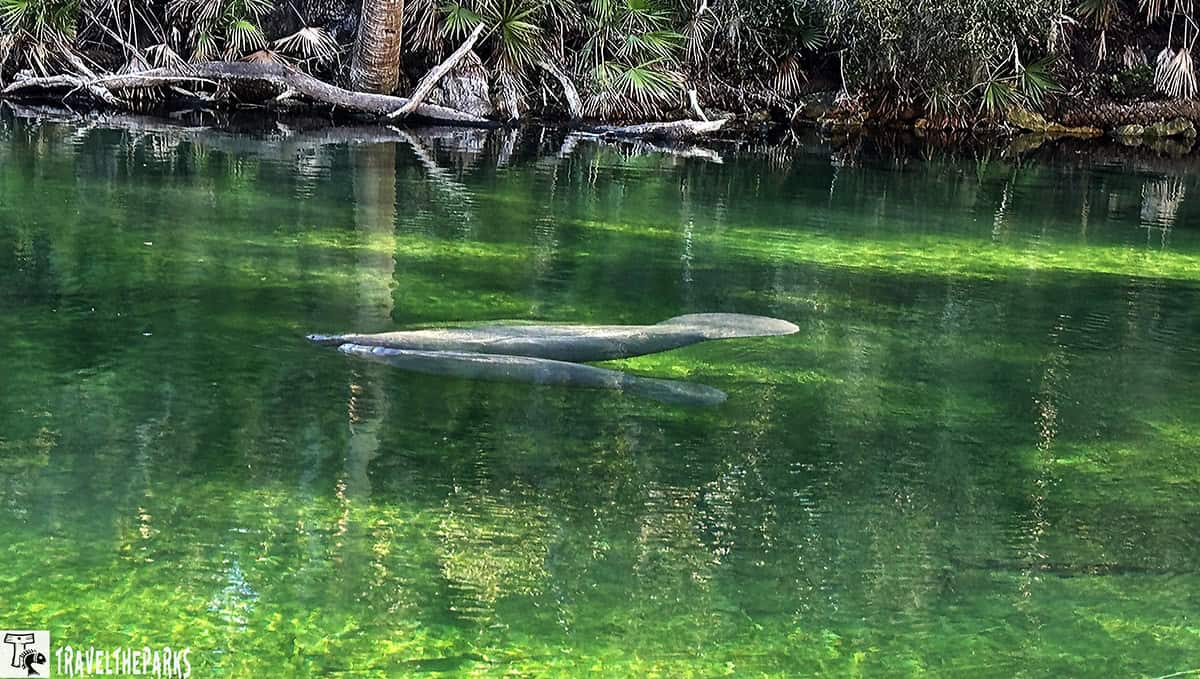
Why is this the best place to see manatees?
The Florida manatee (Trichechus manatus latirostris) is a subspecies of the West Indian manatee (Trichechus manatus manatus). In the summer, manatees, which are sirenians, reside in Florida’s estuaries, canals, rivers, and coastal areas. In the winter months, manatees aggregate at this natural spring.
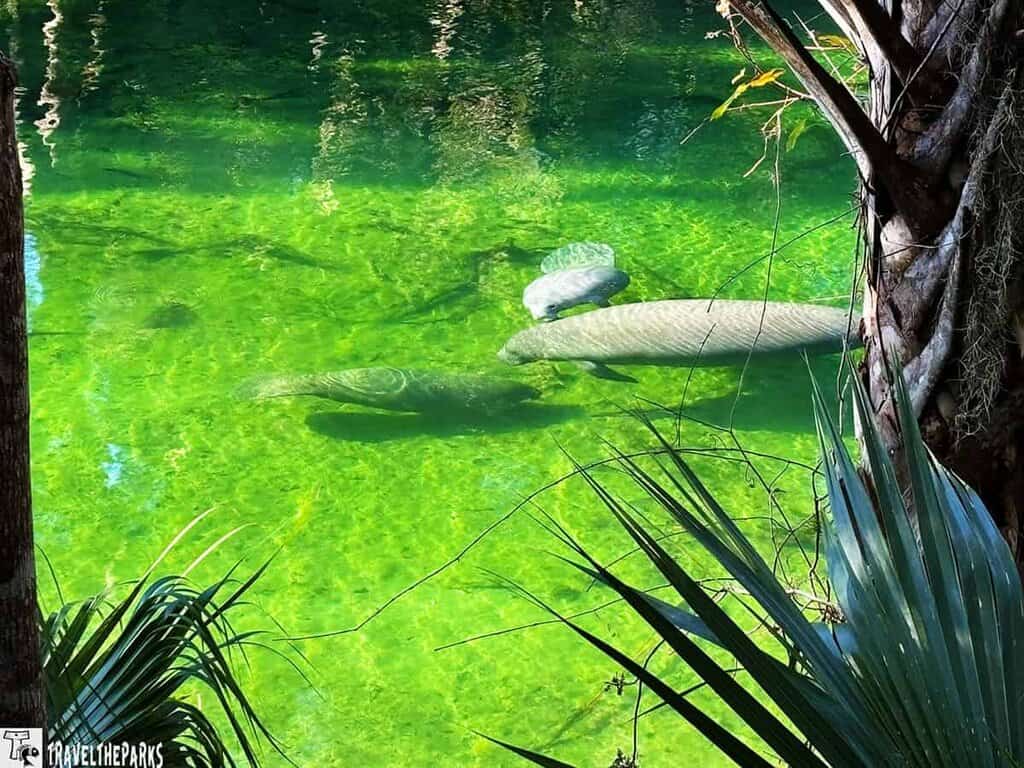
These docile, friendly creatures can’t tolerate temperatures under 68 degrees. Although these chubby fairytale creatures look like they have plenty of body fat, they actually only have an inch of blubber; thus, they are susceptible to cold stress syndrome.
This first-magnitude spring that discharges water at 100 cubic feet per second. The headspring, or “The Boil,” descends 150 feet below the surface, spewing a consistent 72-degree water. In many places, you can see at least 20 feet in the crystal clear waters. The manatee is most threatened by humans, and this spring is critical for their survival.
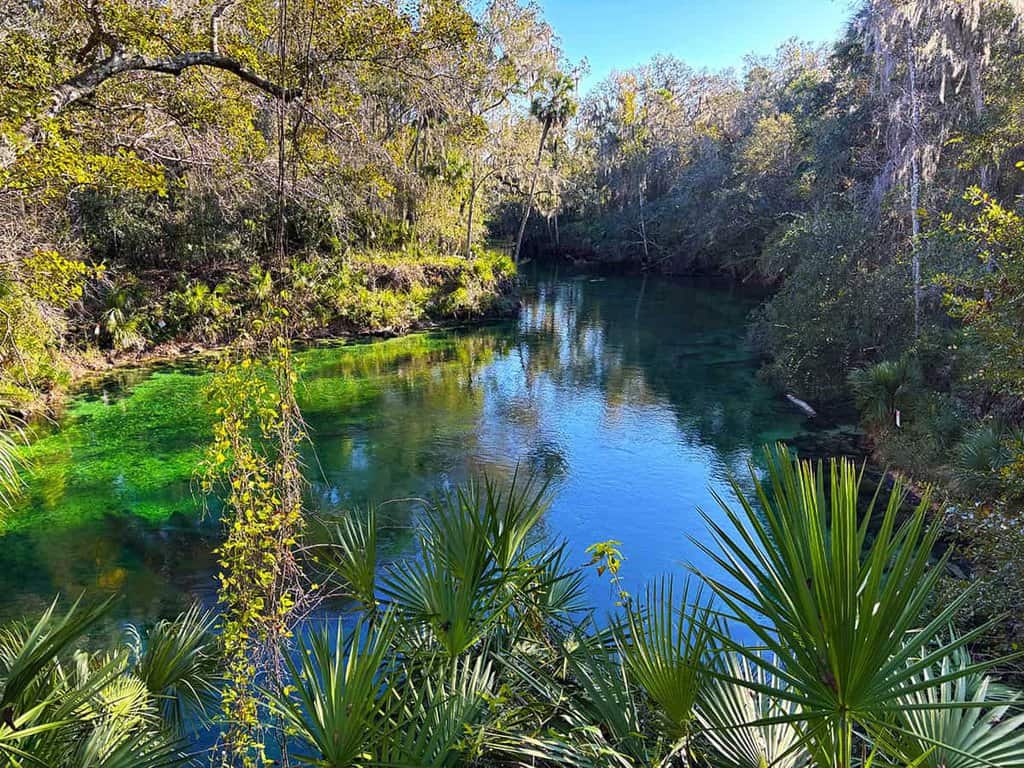
Why These Gentle Giants Call the Iconic Spring Home?
Manatees are herbivores, grazing primarily on seagrasses. Related to the elephant, they feed for 7 hours a day, eating 7-15% or more of their body weight daily. In the river, they forage on water lettuce, pickerelweed, and water hyacinth. Because of their slow movements, every year manatees die from boat strikes- frequently succumbing to injuries caused by boat propellers. Many survivors have scars from their encounters. Much of the St. Johns River is idle speed, thus reducing the encounter of boats versus manatee. Most often, a flipper, snout or a tail breaking the surface of the water is the only sign that a manatee is present.
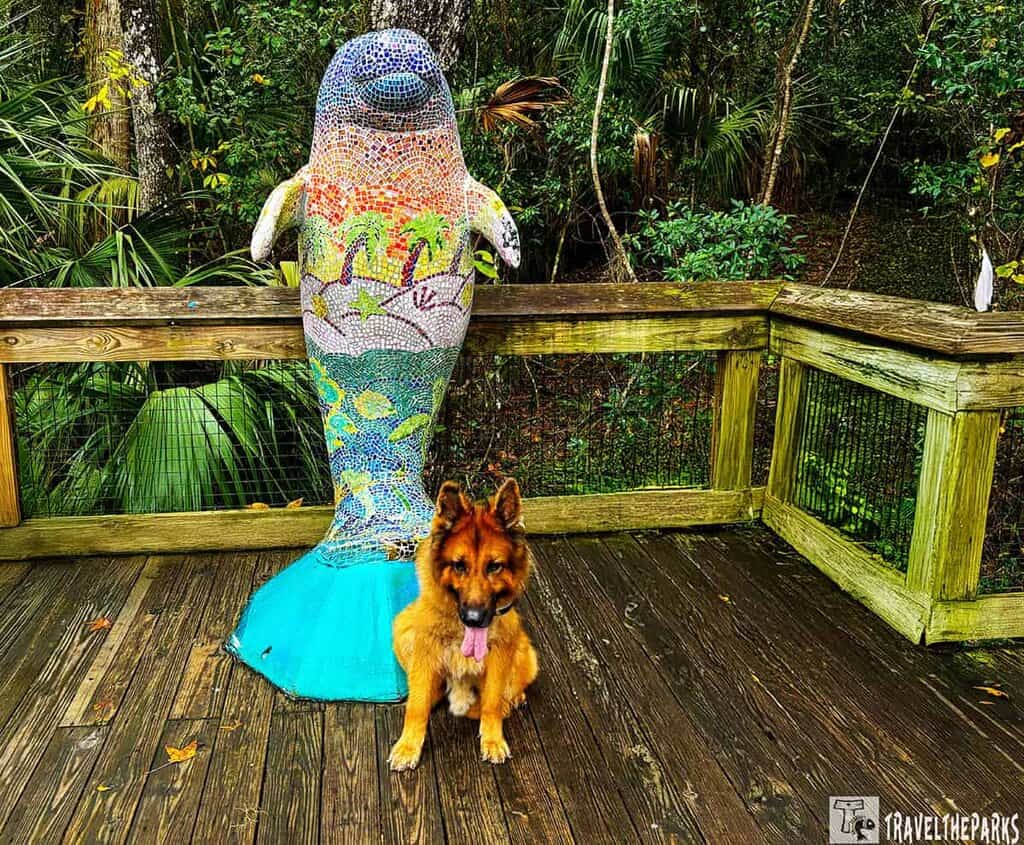
In the spring, the federally protected marine mammals can find sanctuary. It is illegal to harassment manatees. Anything that modifies their natural behavior, like feeding, chasing, or touching, falls into this. Fines can be quite severe.
Observing the manatees in their natural habitat is captivating. Watching a manatee calf nurse under its mother’s flippers is a special treat. Occasionally, you will see them barrel roll as they try to dislodge invasive plecostomus that consume the algae clinging to the leathery wrinkled skin of the sea cows. Listen as they raise their whiskered snouts, snorting for air. We also saw plenty of tail slapping as they seemed to play together.
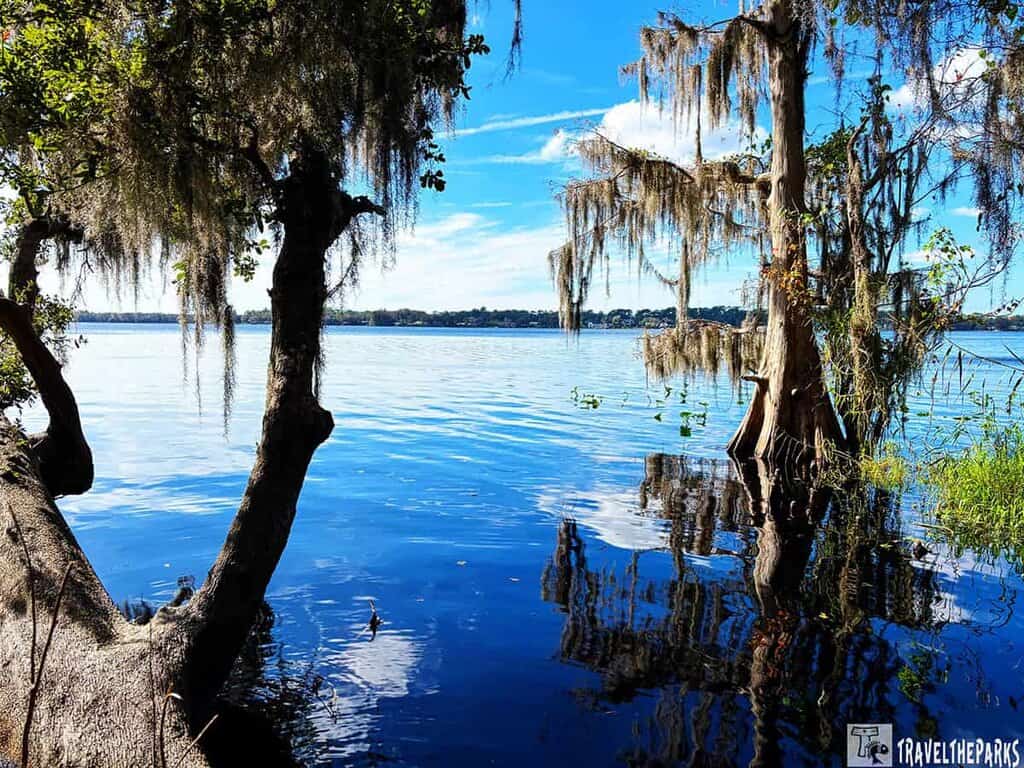
Wander the Blue Springs State Park Trails
The elevated Blue Springs Trail boardwalk covers the entire south side of the run leading through to the springhead area. Enclosed by oak trees draped in Spanish moss, saw palmettos and sabal palms. The spring resembles Jurassic Park. The clear blue springs provide excellent visibility from several viewing platforms that periodically jut out over the surface of the spring. Interpretive displays along the boardwalk deliver an educational and ecological history.
This is a wheelchair-accessible boardwalk. There is a small gift shop and food concession on-site. The gift store sells souvenirs, snacks, camping supplies and limited groceries. Ranger interpretive programs are available throughout the day, and knowledgeable volunteers are always available to answer questions.
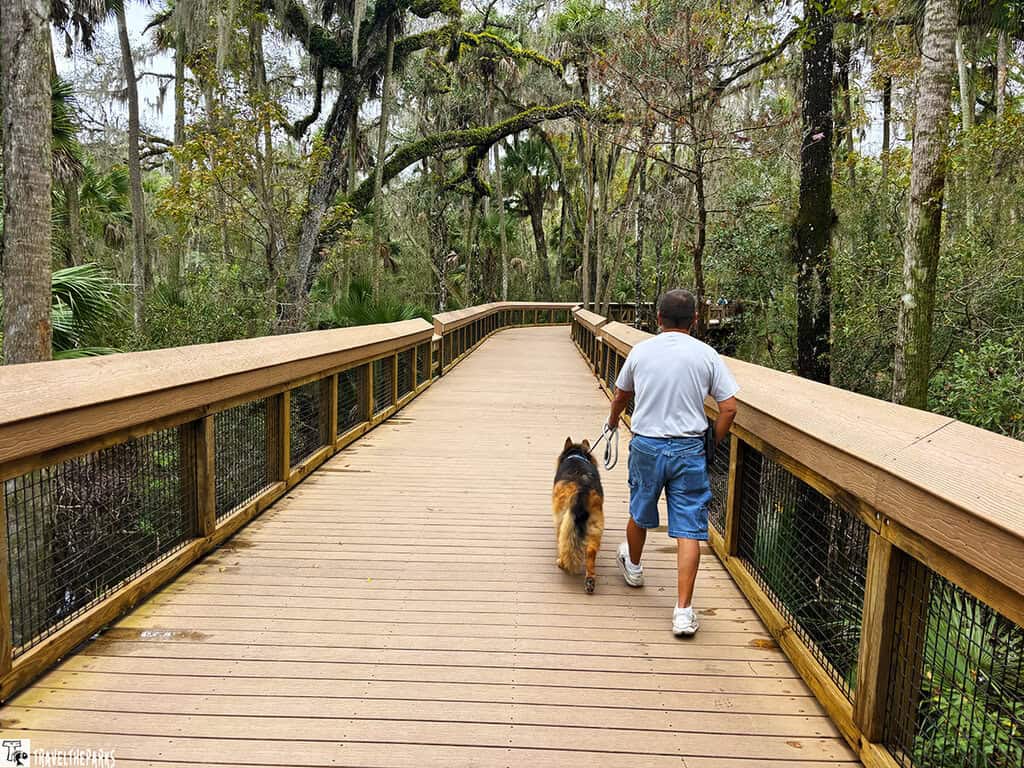
It is common to only hear the sound of water leaving their noses when manatees surface to breathe. Much like a whale might sound. The manatees are not the only animals to find sanctuary in these waters during the cold months. Many fish species venture here as well. Snook, tarpon and various cichlids find refuge from the cold. Native fish like tilapia, alligator gar, sailfin catfish (plecos), bowfin and bass live in these waters year round. They permit fishing in certain areas of the park. They require a Florida freshwater fishing license for anyone 16 years or older.
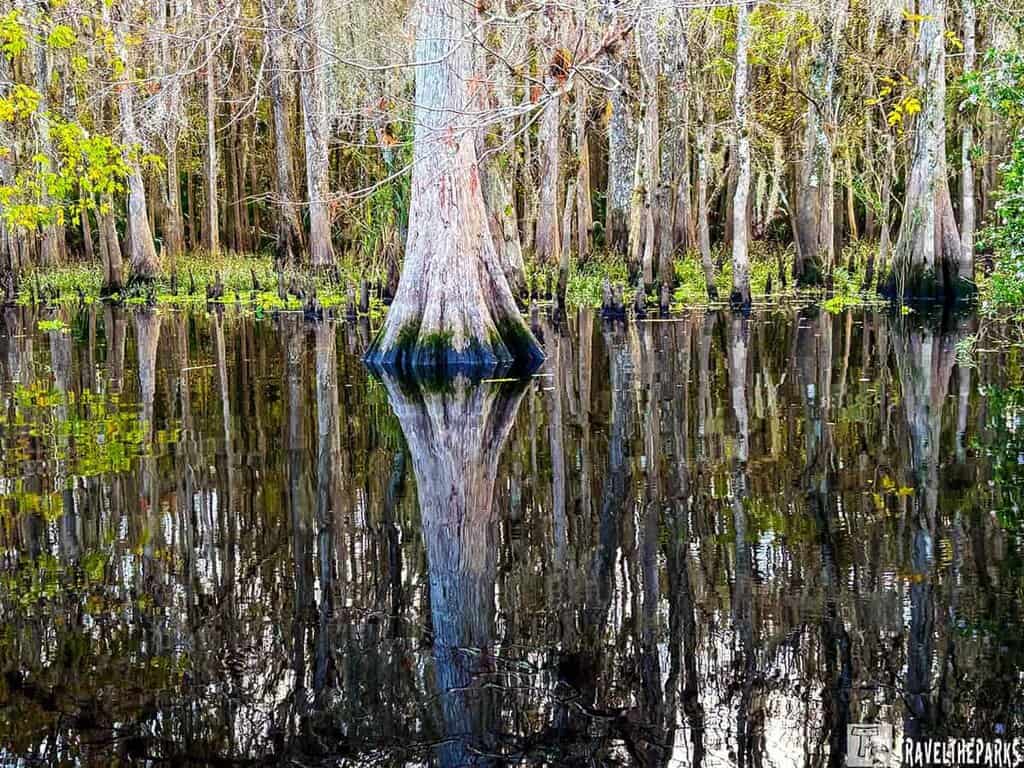
Swimming in the Spring Run and the Boil
In the summer, the boardwalk opens at multiple access points for swimmers to enter the spring. You walk down to the floating dock, then down some metal stairs with railings, and basically have to just plunge into the frigid water. For a reasonable price, rent full snorkel gear (snorkel, mask, flippers) or float tubes at the nearby concession stand. Plenty of room for swimming and flotation tubes and rafts. Personally, I prefer unsurpassed freshwater springs like this one or Wekiwa Springs rather than travel to the beach.
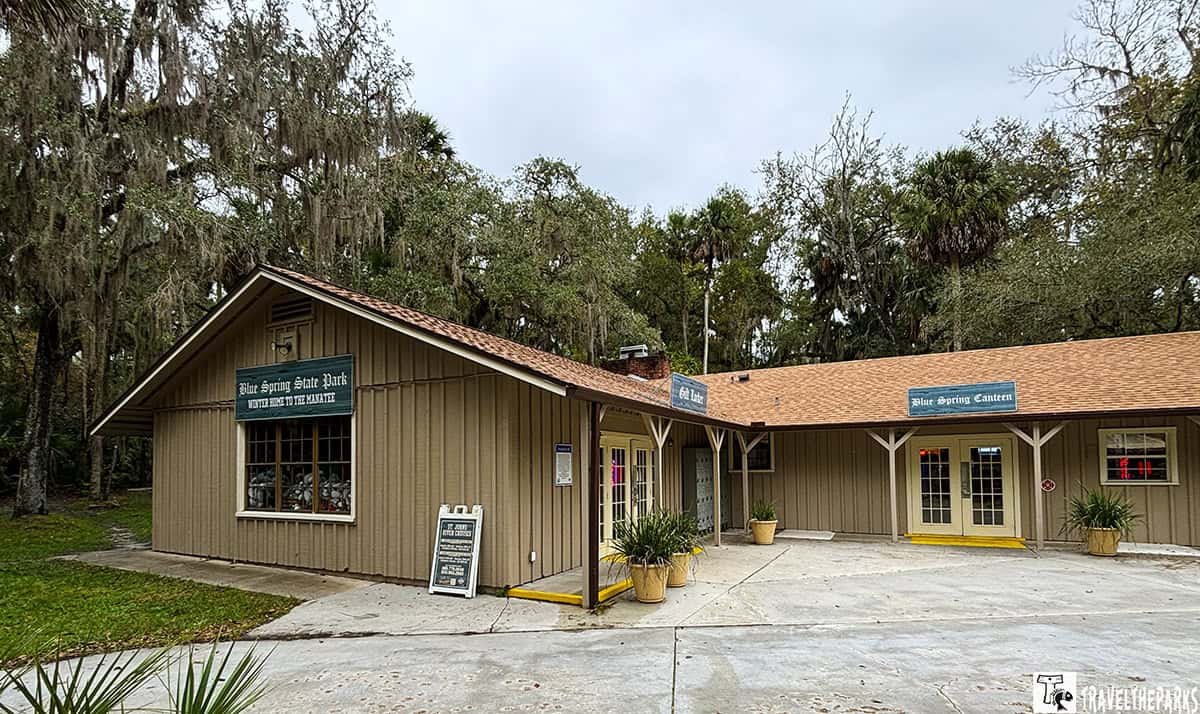
I’d also suggest water shoes because there are rocks and gravel and quite a few fallen branches. Some branches are quite large, and they can be a challenge as the current pushes against you the closer you get to the boil. Shoreline erosion is quite prevalent at the boil. The spring is an ecological jewel-please be respectful and keep to the water.
If you are a qualified diver, you can dive into the spring’s entrance but must have Cave Diver Certification. They will require you to register with the Park Rangers prior to starting your dive. I can imagine that the deeper you go into the cave, it would be an “otherworldly” experience.
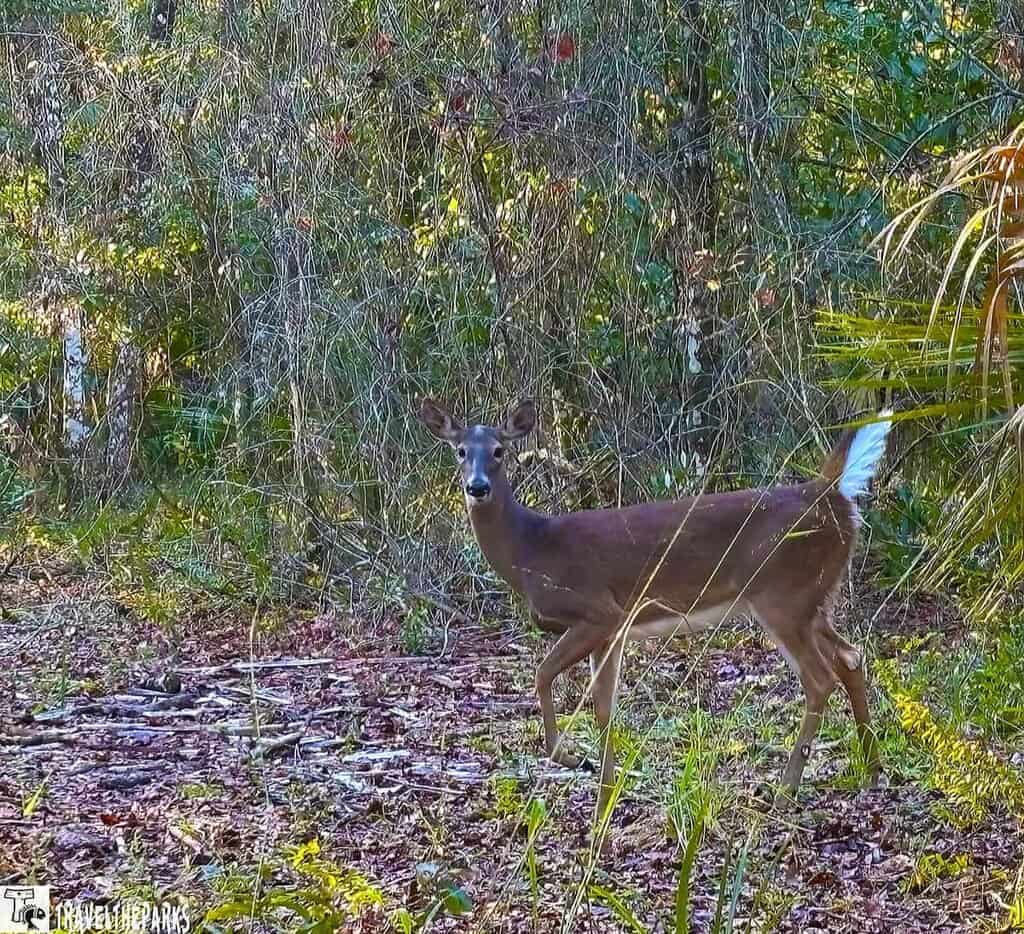
Hiking the Pine Island Trail
On this memorable day trip, you can get a sense of the “Real Florida”. Hiking the trails surrounded by truly stunning scenery under a natural canopy of bald cypress, palms and oak trees. The 4.5-mile Pine Island Trail is an out and back trail. Early in the morning, we had the pleasure of glimpsing a few deer in the open flatwoods. The ranger told us that bears frequent the trail. In the wetlands there are a variety of wading birds, ospreys, eagles and kingfishers.
A large picnic pavilion lies in the shade of gigantic oaks with access to BBQ grills, provides shelter from the weather. Knowledgeable volunteers answer questions.
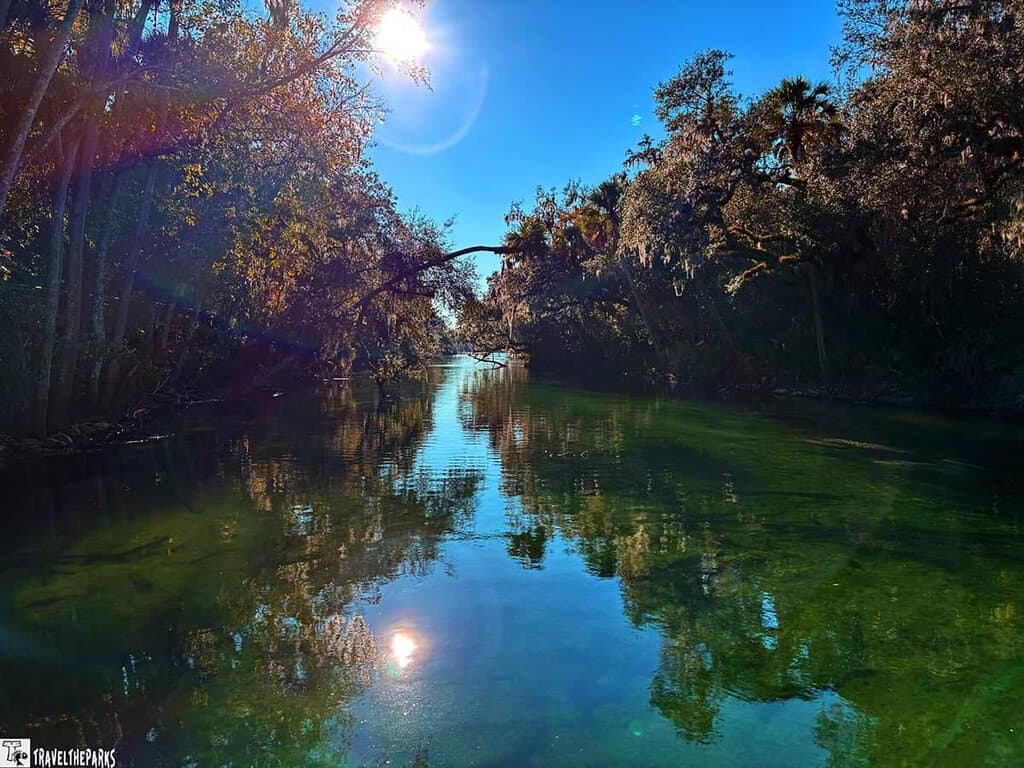
Navigate the river on a kayak, canoe or boat tour
If you’d like to paddle to explore the tannic waters of the St. Johns, canoe or kayak rentals are available. The best time to paddle is during the week as fewer motorboats are on the river, although the entire area is all idle speed. Tannic water comes from tannic acid. Basically, the water looks like tea. Tannic acid comes from decomposing leaves of coniferous trees such as cypress.
We went on the 2-hour narrated nature and ecological cruise on the St. Johns River with Blue Springs Adventures. There are two different launch times: 10 AM and 1 PM. This is a great fun introduction for visitors of all ages. Rates are reasonable and well worth the cost…it is very relaxing and you will see plenty of wildlife.
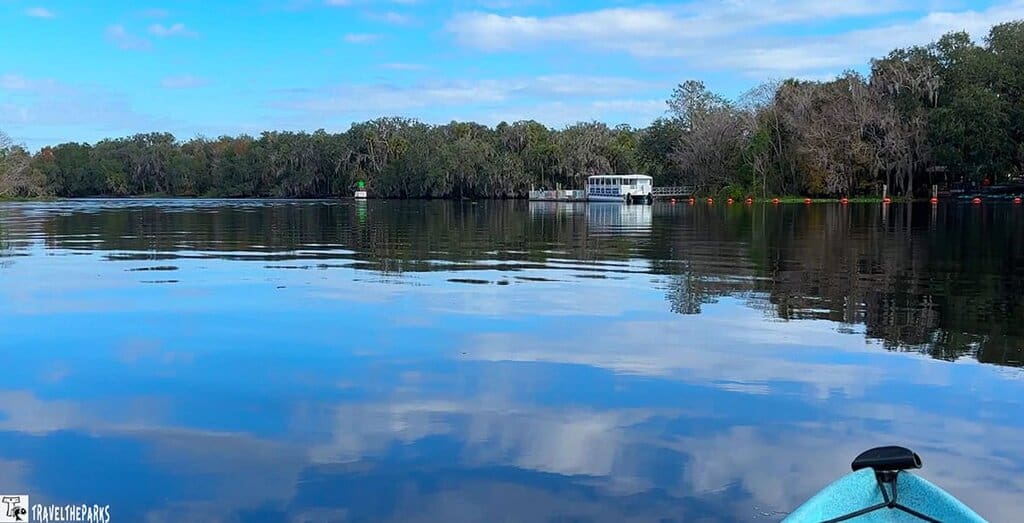
New this year are the All-Terrain Segway Tours. Landlubbers can book wilderness excursions with a guide who has insight into the ecological wonders of the area.
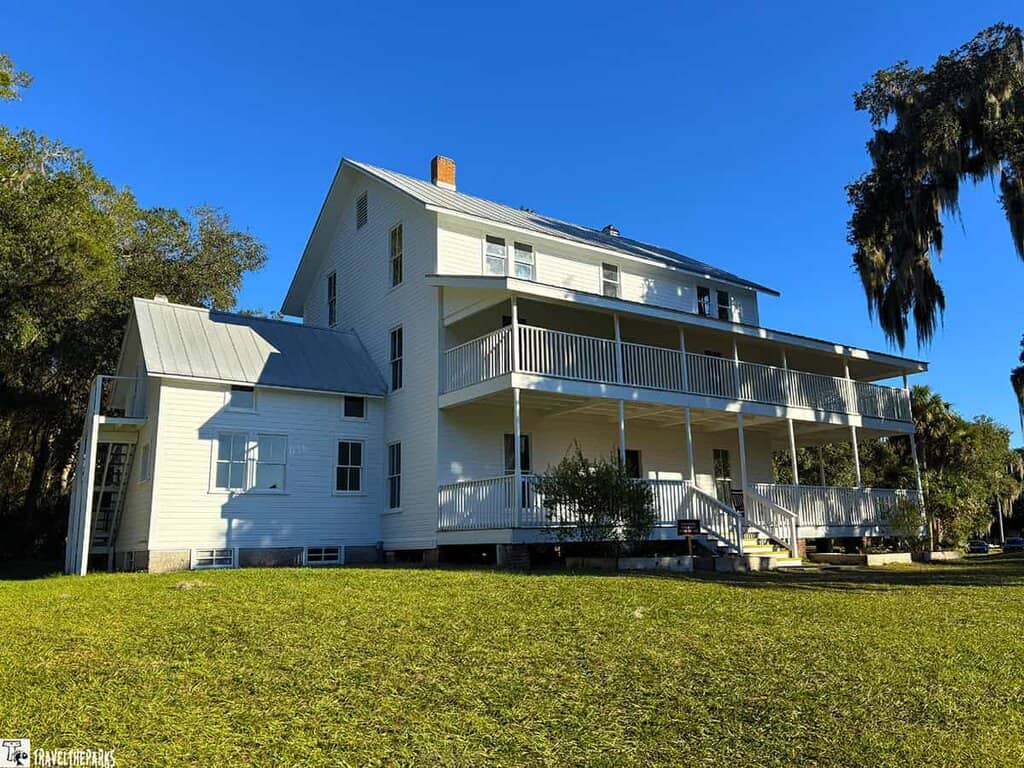
Step back in time at Thursby House
The large plantations style home built in 1872 by Louis Thursby is open Wed-Sun for self-guided tours. The restored home sits atop the Indian shell midden, the highest point in the park. Historic artifacts tell the story of daily life int he early 1800s. Only the first floor is open, and there’s an accessibility ramp in the back for easy access. Birth and marriage certificates are just some preserved documents you can read, and the kitchen is a splendid look into life in the early days. Relaxin on one of the porch rocking chairs, you can imagine what a typical day must have felt like.
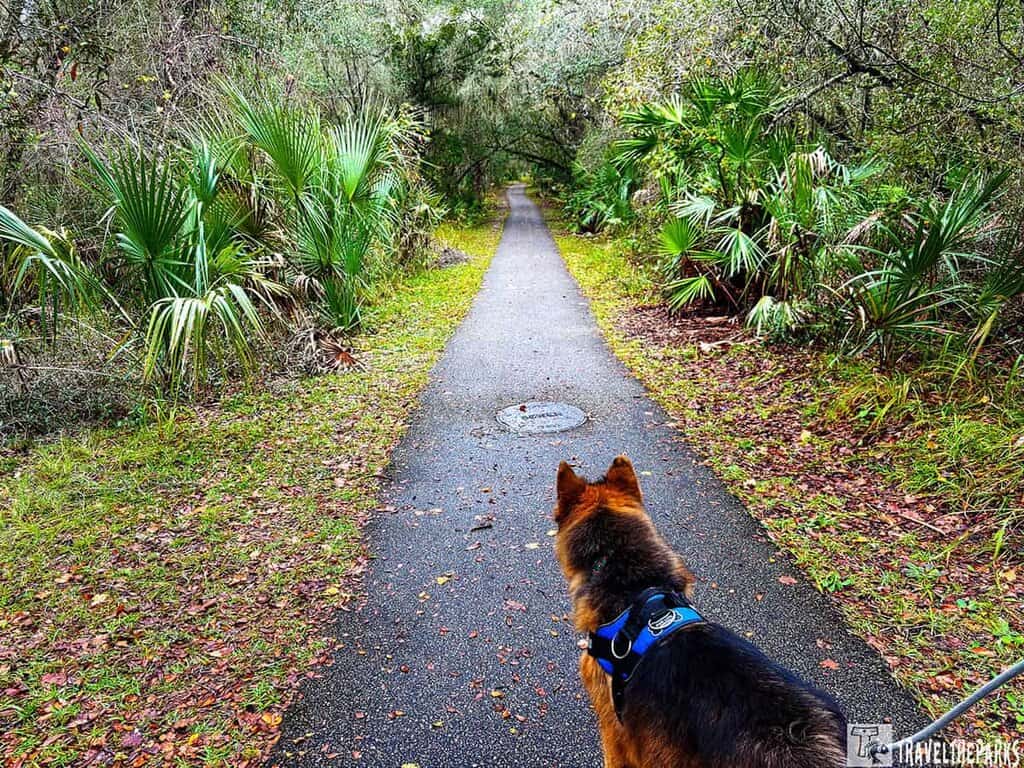
Camping and Cabins in Blue Springs State Park
The park has 51 campsites-27 with electrical hookups. Each site has a picnic table, grill and water. There were several types of outlets to accommodate several electric hook-ups. The spacing of the sites affords a sense of solitude. The park has clean bathrooms and hot showers. Also, there were coin-operated laundry machines available at the bathrooms as well.
This is one of the few state parks that offer six modern cabins if you’d like to stay overnight. Rental cabins can accommodate up to six people with two bedrooms. The cabins sit in a thick oak hammock. They feel very secluded, yet a simple walk to the spring. Each cabin has a fully equipped kitchen, screened porch, and outdoor grill with a picnic table, heating and air conditioning.
Travel Tip: If you are lucky enough to stay in the park overnight in March-April, be on the lookout for fireflies in the evening
They take reservations 11 months’ advance through ReserveAmerica (800-326-3521). The cabins and campsites book very quickly.
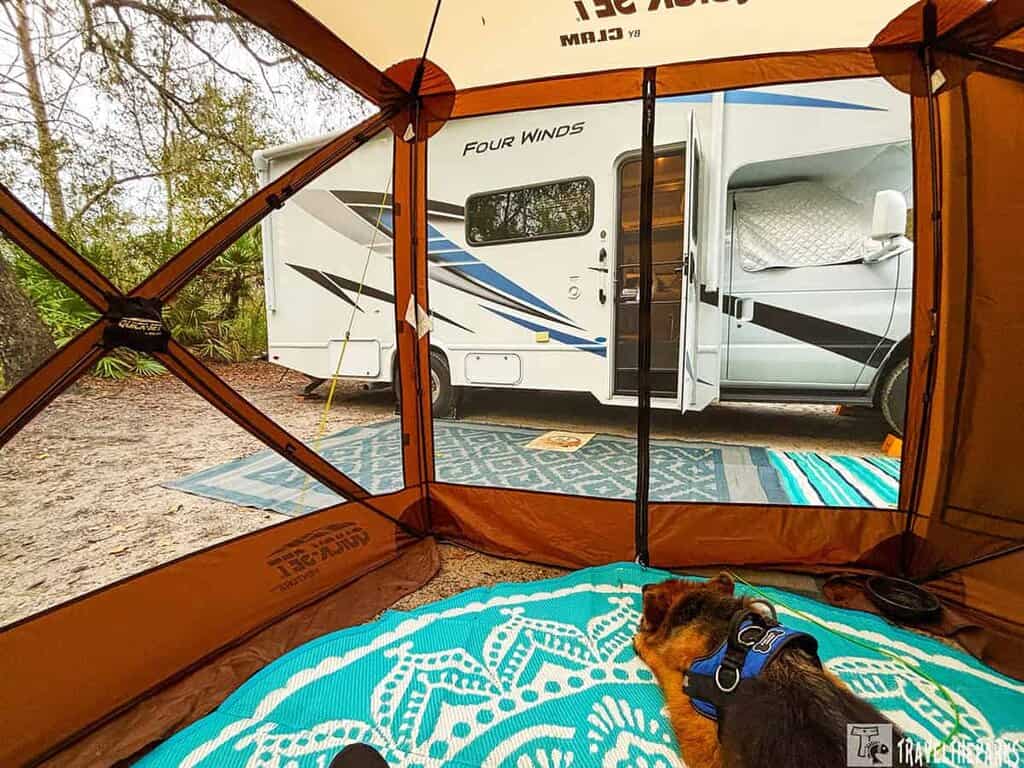
What to Bring on Your Trip to Blue Springs State Park
- Park hours are 8:00 a.m. until sundown, 365 days a year.
- Blue Springs State Park, 2100 West French Ave., Orange City, FL 32763. Phone 386-775-3663.
- The best time for viewing large groups of manatees is from November through March.
- $6 per vehicle. Limit 2-8 people per vehicle.
- Traveling in Florida requires you to have plenty of water in a refillable water bottle, sunscreen, bug repellent, and a camera.
- They allow pets on a leash in the park. They are not allowed on the boardwalk near the water.
- Adult manatees are typically 9-10 feet long from snout to tail and weigh around 1,000 pounds.
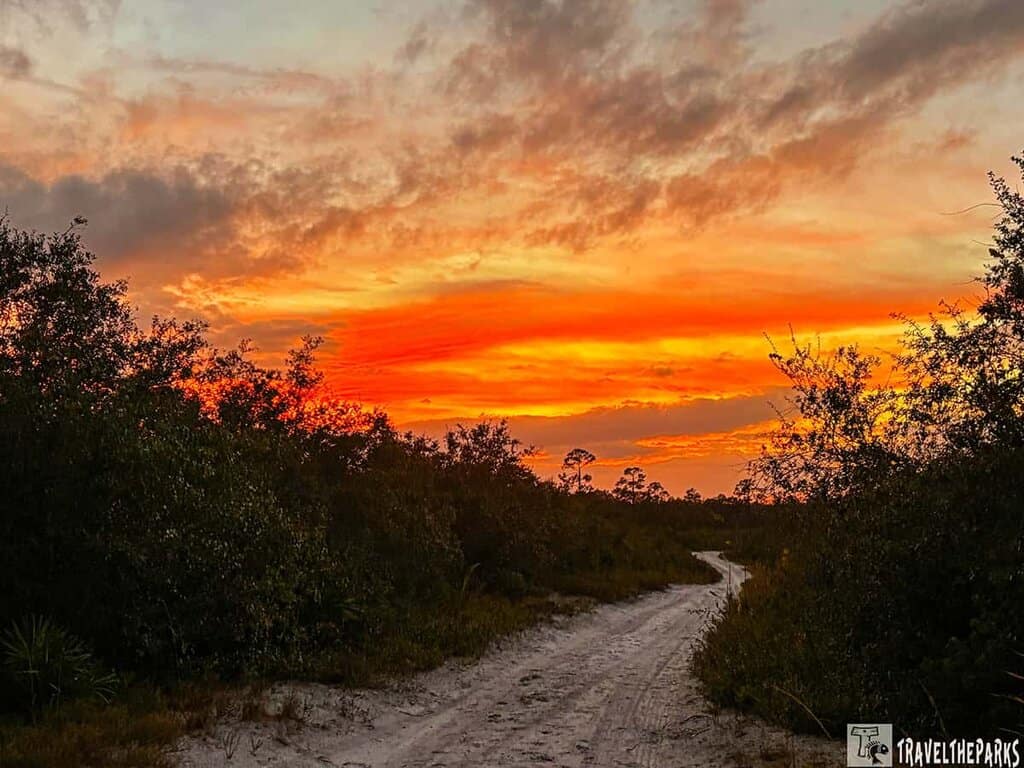
Final Thoughts: Home To Enchanted Manatees, Beautiful Blue Springs Park
There is a place where time flows not in minutes, but in the gentle, rolling sighs of ancient creatures. Blue Springs State Park is more than a destination; it is a singular sanctuary. Unlike the vast, grassy expanses of the Everglades or the coastal waters of Key Biscayne, Blue Springs provides a truly unique habitat—a constant, crystalline 72-degree spring run, a liquid winter haven where manatees gather like gray, wrinkled angels in its glowing heart.
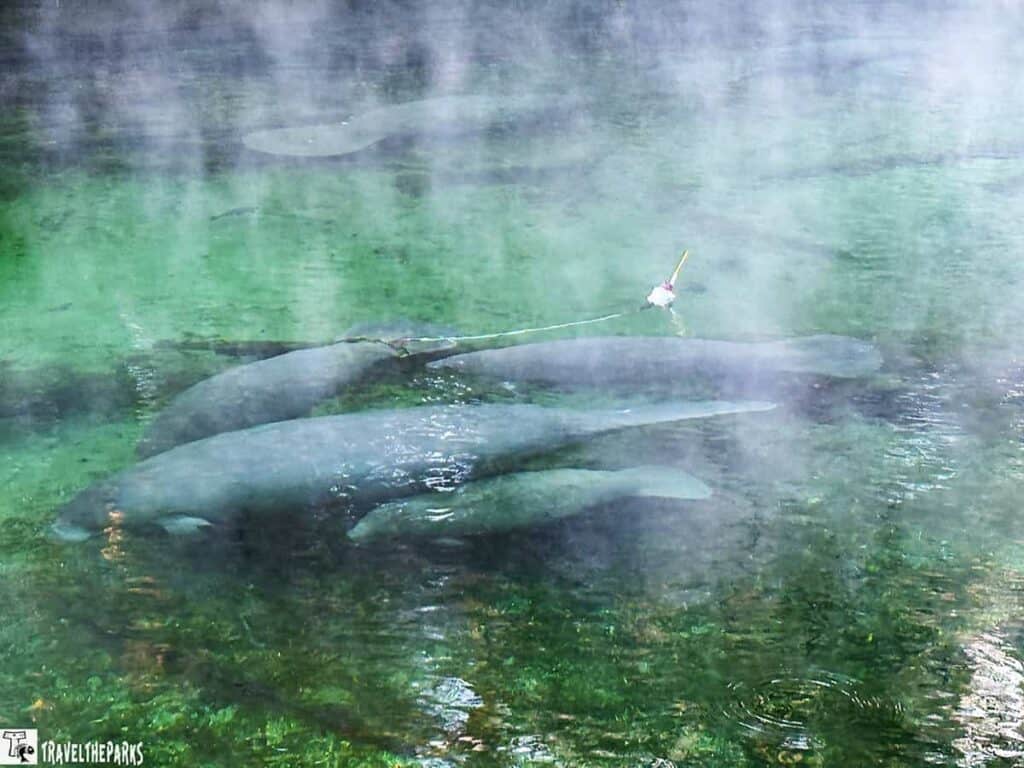
This visit is one I will treasure forever. It was such a wonderful experience! To stand quietly on the boardwalk, sharing a moment with a mother and her calf in water so clear you can see every gentle paddle of a flipper… it’s an absolutely superb way to spend a day. The “blue” of the springs is a living color—an impossible, glowing aqua that acts as a perfect window into their serene world.
In the end, Blue Springs doesn’t just host manatees; it guards their magic. And it offers us a fleeting, precious chance to reconnect. You leave with more than photographs; you carry a resonance of deep calm and a renewed sense of wonder.
Have you been to Blue Springs State Park? What did you like best? Please share your experience in the comments below.

